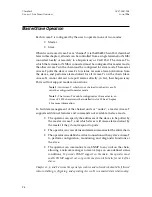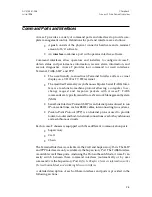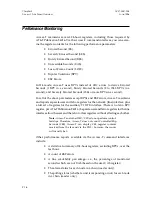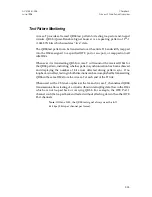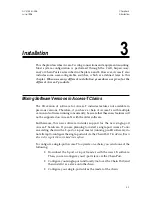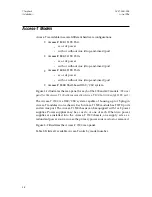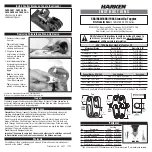
Performance Monitoring
Access-T maintains several 24-hour registers, including those required by
AT&T Publication 54016. Via the Access-T command interfaces, you can exam-
ine the register contents for the following performance parameters:
•
Errored Second (ES).
•
Severely Errored Second (SES).
•
Bursty Errored Second (BES).
•
Unavailable Seconds (UAS).
•
Loss of Frame Count (LOFC).
•
Bipolar Violations (BPV).
•
ESF Errors.
In D4 mode, Access-T uses BPVs instead of CRC errors to derive Errored
Seconds (1 BPV in a second), Bursty Errored Seconds (2 to 1543 BPVs in a
second), and Severely Errored Seconds (1544 or more BPVs in a second).
For all of the above parameters except BPVs and ESF errors, Access-T maintains
and reports separate user and telco registers for the network (line) interface, plus
a full set of registers for the auxiliary T1 DTE interface. (There is no telco BPV
register, per AT&T Publication 54016.) Separate user and telco registers for the line
interface allow the user and the telco to clear registers without affecting each other.
Note:
Access-T and other DSU/CSUs do not perform control-
led slips. Therefore, Access-T does not count Controlled Slip
Seconds (CSS). Access-T can display CSS register contents
received from the far end via the FDL; however, the counts
will usually be 0.
Other performance reports available via the Access-T command interfaces
include:
•
A statistical summary of 24-hour registers, excluding BPVs, over the
last hour.
•
A count of ESF errors.
•
A line availability percentage—i.e., the percentage of monitored
seconds which are not UAS (based on the user UAS register).
•
The alarm status for each node in a chain (master only).
•
The polling status (whether a unit is responding or not) for each node
in a chain (master only).
Chapter 2
ACST-0351-005
Access-T Functional Overview
June 1996
2-16



